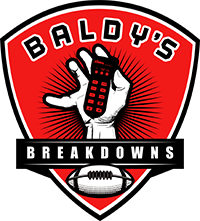
Broncos Unleashed: Grinding Down the Saints’ Offense
In the kaleidoscope of clashing colors, roaring crowds, and the cacophony of cleats scuffing against turf, the Denver Broncos’ defense etched an indelible mark that resembled a well-coordinated law enforcement operation. This past Sunday’s game was less about athleticism and more about enforcement—the thorough implementation of a precise game plan that left Saints’ quarterback, Rattler, marooned in a sea of despair.
To understand the mastery on display, picture each defensive play as a textbook-perfect raid. The Broncos came armed—not with handcuffs, but with blitz packages that closed in with inescapable pressure. Communication and coordination flowed effortlessly as each player fulfilled their role, mirrors of officers executing perfectly timed maneuvers that pin down their target and extract compliance.
Denver’s blueprint for containment was nothing short of tactical brilliance, a construct that did not rely on just physical prowess, but on mental acuity and situational awareness. Returning fire at every Saints’ offensive audacity, the Broncos’ defensive corps systematically dismantled any semblance of control Rattler hoped to muster. A blanket of defenders folded in at every attempt he made to escape, like seasoned operatives encircling a suspect ready for detainment.
The defensive line served as the first wave of retribution, relentless in their pursuit. With every snap of the ball, they initiated penetration upfield. Defined by speed and fueled by an unwavering sense of duty, the likes of Bradley Chubb and Randy Gregory, among others, gnawed at the Saints’ offensive line like canines trained to breach, with precision that bordered on artistry. Each increment of pressure fractured Rattler’s pocket into a collapsing quagmire of shrinking time and vanishing space.
Behind the disrupting vanguard, the linebackers moved as sentinels on patrol. The commitment to the mission was non-negotiable, the ferocity nonpareil. A linebacker like Alex Singleton acts as a middle manager overseeing an expanding operation, meticulous in diagnosing the play while providing ruthless discipline-orientation for any attempted escape maneuvers.
Simultaneously, the secondary moved like undercover agents, invisible yet omnipresent, awaiting cues from the chaos upfront to spring into action. Passes attempted by Rattler became high-risk endeavors, much akin to fugitives chasing a fading hope under the tight watch of perceptive sentinels like Patrick Surtain II, ready to nullify any footstep not sanctioned by the league’s rulebook.
With each ultra-fast blitz, fans rising like a chorus of approval felt as if justice was delivered on account of defensive domination, an answer to the team’s recent struggles. The seams holding Rattler’s offensive cohesiveness tore apart like pages in an overdue arrest warrant, methodically and without a shadow of mercy.
The Denver defensive approach gained further dimension through the support of the strategic masterminds on the sideline, sending frequencies akin to police radio signals directing the responding units. Deliberate in their instructions, the harmony between coaching wisdom and on-field genius evoked empathy not only for Rattler’s plight but also for the creativity of the Broncos’ play-calling.
Above all, the goal of any law enforcement is maintaining control—preventing chaos before it even arises—and Denver executed this sublime transition with sharp assiduity. As tackles mounted and turnovers became tactical trophies hauled in by merciless enforcers, the true scale and consequence of defensive stewardship became manifest.
Had the Broncos lingered, undecided or second-guessing their tactics, this gripping narrative might have suffered a twist. Instead, like a precinct that never rests, the defense executed each blitz and pressure without ambiguity. The game clock—a looming silencer tallying the final vigil—listened unfazed to hear Saints trying to remix their walk toward penitence.
Such was the expertise of Denver’s defense that it spawned ripples far beyond the conventional touchdowns and tackles. The grandeur of the performance travelled on thought-provoking analysis by football journalists and detailed breakdowns from analysts like those on Baldy’s Breakdown. Here, they divulged the meticulous layers of Denver’s defense as more than raw strength, but as the sculpture of informed precision—a realization captured and cherished by those craving football’s cerebral satisfaction.
Every statist dispatch available online fuels adrenaline for football aficionados seeking dramatic insights into each judgment call and blitz daring in the post-game life on platforms like YouTube and this specific highlight video—both repositories of praise and critique. Loyal fans don the badge of pride and share scenes via social squares led by Facebook Profiles, narrating unforgettable couplets about a successful execution conducted and understood.
As the dust settles on this particular engagement, the Broncos defense reloads, knowing justice—on the field or in the streets—is a vigilant enterprise. A relentless journey towards dominance has been carved in their ethos. For until the final whistle signals the game over, no lead is ever secure, nor is any mission ever truly complete. And thus, carrying forward their symphonic enforcement, when duty calls again, whether looming lights are Tuesday or Sunday, they’ll be poised to answer—just a blitz away from orchestrating yet another defensive masterpiece.
